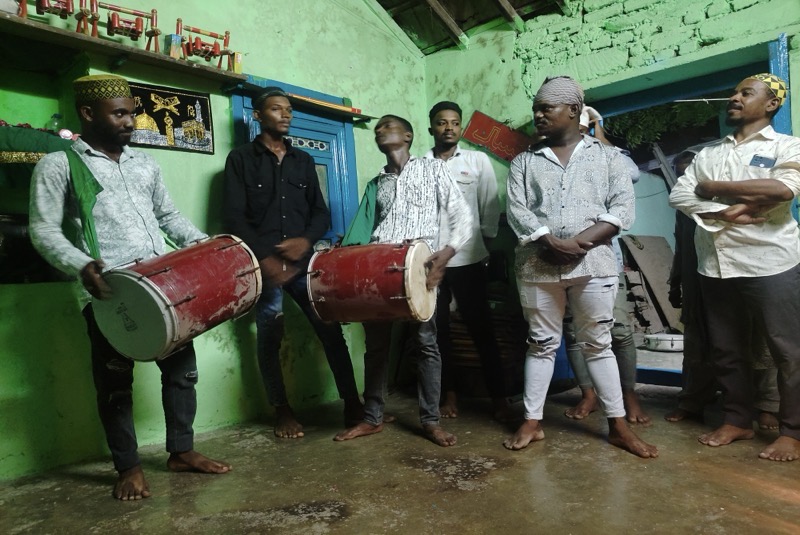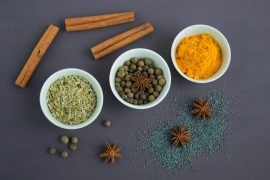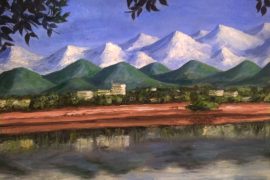The term ‘Siddi’ refers to the Afro-Indian community in India. When the Siddis arrived in India on ships from different corners of eastern Africa, such as Zanzibar, Ethiopia, Sudan, and Tanzania, in the thirteenth (with the Islamic invaders) and fifteenth centuries (with the Portuguese), they carried several musical instruments in their hands and songs in their minds.
Although they were brought in as slaves, palace guards, and harem guards to serve the invaders and colonisers, music has always been integral to their daily lives. At the end of tiring days of work and labour, one of the many ways the community entertained themselves was by singing, dancing, and playing various musical instruments.
Gradually, as they settled in places like Telangana, Gujarat, Maharashtra, and Karnataka, they started interacting with local musical cultures and traditions, adopting them within their cultural forms and eventually giving birth to Afro-Indian musical forms.
This article talks about a form of musical practice called Salaami, which is used in the Siddi community in Gujarat.
Afro-Indian Cultures of the Siddis
The Siddis in Gujarat follow a sect of Afro-Sufism that is quite common in Sudan and Zanzibar. They archive their Eastern African ancestral roots in songs, dance, and spiritual practices like Zikr singing and Dhamaal dancing. They also worship their spiritual ancestors, such as Mai Misra, Baba Gor, Bava Habas, and Sidi Nabi Sultan.
Historically, the Siddi knowledge systems are rooted in the natural environment, including mountains, oceans, forests, trees, and wildlife, which is captured in the lyrics of their songs.
Singing, performing, and sharing the songs within the community and outside is an essential exercise of the Siddis to ensure that their ancestral cultures and traditions are orally and musically carried forward across generations. To ensure that, besides singing Zikrs and dancing Dhamaals, the Siddis also perform Salaamis, which are, in fact, integral to Zikr singing. Many documents have already been produced about Dhamaals and Zikrs. However, the cultures and practices of Salaami singing have hardly been discussed.
What are Salaamis?
Salaami is not just any Siddi cultural practice but a vehicle to acknowledge the Siddis’ connections with spirits and the afterlife and how their cultures have been influenced by humans as well as more-than-human entities and ideologies.
Salaami is an offshoot of Zikrs performed at the end of ‘Baithaaki Dhamaals’ (Dhamaals performed in the sitting position) to acknowledge the spiritual ancestors for blessing them with the knowledge values of community kinships. To further understand, let us look into the lyrics of a Salaami:
Part – I
Ho kisko pata
Jo amar rahe
Jiyenge to phir milenge (twice)
Ho naat-jamaat
Jo amar rahe (twice)
Ho jiyenge to phir milenge
Ha jiyenge to phir milenge
Ho jiyenge to phir
Part – II
Boley ya apney yamey ya
Saya jotey musaley
Ho dada
Saya jotey musaley
Part – III
Ho oliya salaam walaikum
Baba mere salaam walaikum (twice)
O Misra peer ko
Walaikum salaam
O salaam waliyon ko
Walekum salaam
Salaam walekum
Walekum salaam (twice)
Part- IV
Bava Gor salaam walaikum
Kanga misra salaam walaikum
Mai Misra salaam walaikum
Gori Shah salaam walaikum
Pir Badshah salaam walaikum
This Salaami was shared by Sikandar Siddi, a 48-year-old Siddi man from Ahmedabad who is a professional Dhamaal singer and dancer and was documented during fieldwork in Gujarat in June 2024. The fieldwork was conducted by this author and his research assistant, Niharika Sinha, with Farooq Murima Siddi, a professional Siddi dancer. The documentation was done with due permission from the Sikandar, Farooq, and other Siddi community members in Jamnagar in Gujarat.
As Sikandar Siddi explained, this Salaami invokes the blessings of Siddi spiritual leaders like Bava Gor, Mai Misra, and Sidi Gori Shah so that the Siddi community can continue living together in life and the afterlife. The Siddis accept that life and death are normative parts of human life and cannot be avoided.
With the community’s spiritual, cultural, and historical efforts, the Siddis’ knowledge and values can be intergenerationally preserved, transferred, and practised. The Salaami also says that they should greet and share mutual respect whenever the Siddis meet instead of spreading hatred, conflicts, and tensions so that even in the physical absence of each other, the spiritual bond does not cease to exist.
The Salaamis are performed at the end of the Dhamaals because they remind and assure the Siddi community that their cultural knowledge systems are inconclusive and will continue even in the afterlife. Besides highlighting the intergenerational values of Siddi cultures, Salaamis, through greeting their eastern African ancestors — Bava Gor, Mai Misra, Gori Shah, and Pir Badshah — remind the community of the importance of remembering their eastern African spiritual roots and the local spiritual cultures of Gujarat centred on the ecological knowledge of oceans and hills. This is why stories of eastern African cultures are sung in the shrines near the sea coasts of Gujarat, generating a transoceanic, multi-rooted, and Afro-Indian archive.
Today, the community is subject to multiple levels of racial, cultural, economic, political, and religious discrimination for their Islamic religious affiliations and physical appearances. Siddis children are denied admission to schools, subjected to racial ridicule by classmates and teachers, denied healthcare, and mistreated at workplaces.
In such hostile conditions and daily struggles, Salaamis and other forms of music function as essential tools of therapy and resistance for the community. The Siddis may be denied education in formal schools. However, that does not stop them from curating alternate teaching-learning spaces of singing and dancing to disseminate their transoceanic knowledge values within their community and beyond.
-30-
Copyright©Madras Courier, All Rights Reserved. You may share using our article tools. Please don't cut articles from madrascourier.com and redistribute by email, post to the web, mobile phone or social media.Please send in your feed back and comments to [email protected]











